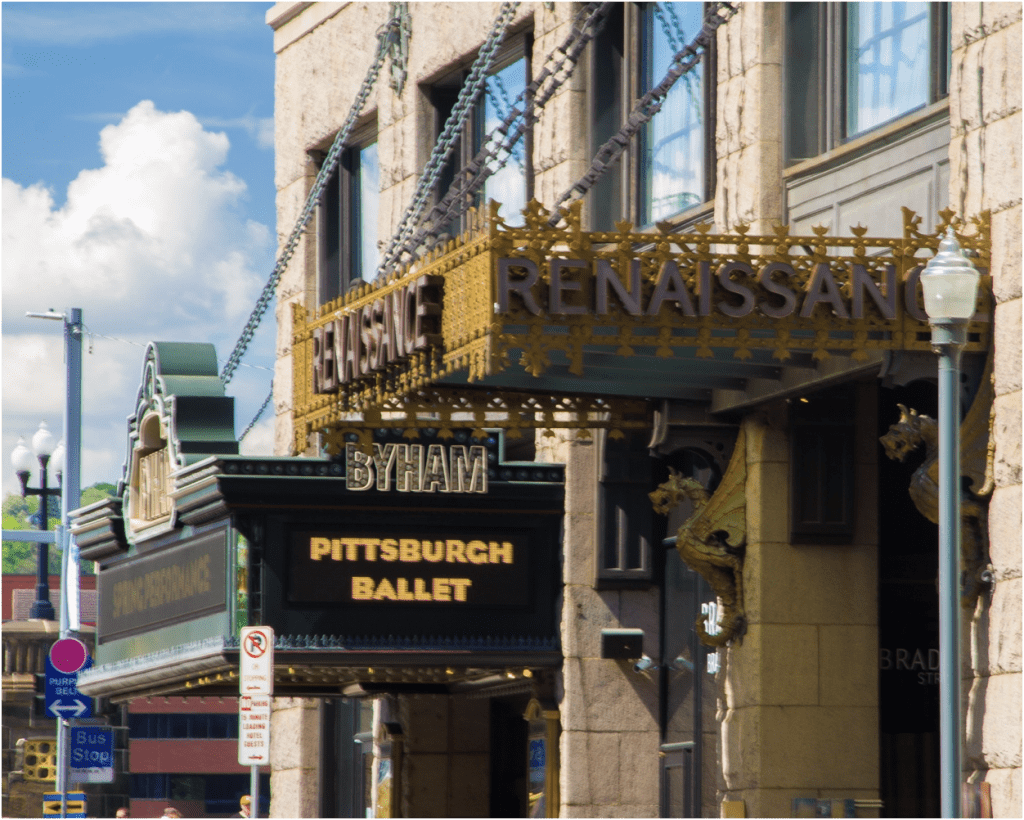How Downtown has changed in 30 years

When I was a kid.
In the past the area of The cultural district was a dangerous place. Most noteably Pittsburgh’s red-light district. In 1984 HJ Heinz II envision the idea of the Cultural District along the Penn-Liberty Avenue corridor. Today the 14-square block area continues to transform from a red-light district to a dynamic arts and residential neighborhood. There are more then 15 arts venues. Its transformation is widely praised as a model for urban redevelopment through the arts. Brendan Lemon of The New York Times wrote, “To describe Pittsburgh’s unconventional, un-Disneyfied remodeling of its Cultural District… is to explore how theater can help transform urban identity”.
the Cultural District is a known for theaters, art galleries and cultural landmarks like the grand Heinz Hall, home to the Pittsburgh Symphony Orchestra. Benedum Center for the Performing Arts. Besides the Arts the area is know for great food.
https://trustarts.org
Now
A tip to downtown Pittsburgh would not be complete without going to the Cultural District. An area starting at Gateway Center and going to the Strip District. The two main streets are Penn Ave and Liberty Ave. As a child I remember this part of town being a “no mans land”. It was known for being a very dangerous place after 5pm. In fact, I remember walking these streets and seeing garbage and urban decay everywhere. It was such a pleasure visiting the Cultural District.


Must See
The Benedum Center for the Performing Arts, is a theater and concert hall located at 237, 7th Street in the Cultural District. Designed by the Philadelphia architectural firm Hoffman-Henon, it was built in 1928 as the Stanley Theatre. The former movie palace was renovated and reopened as the Benedum Center for the Performing Arts in 1987.everywhere. It was such a pleasure visiting the Cultural District.
Restaurants:
- Bridges & Bourbon $$American (New), Cocktail Bars(412) 586-4287930 Penn AveDowntown
- Indoor & Outdoor diningDelivery“This is one of my favorite spots in the cultural district. It is so cute and the service is always” moreFind a TableOffers reservations
- Proper Brick Oven & Tap $$Italian, Pizza, Bars(412) 281-5700139 7th StDowntown
- Indoor & Outdoor diningDeliveryTakeout“This is an excellent restaurant. I ordered a cider, bacon candy, and a pizza. All three” more
- Sienna Mercato. $$Italian, Pizza, Bars(412) 281-2810942 Penn AveDowntown
- Indoor & Outdoor diningDeliveryTakeout“ and the bar while dozens of empty seats sat empty around the restaurant. The drinks were overly sweet too” more
- täkō. $$American (New), Mexican(412) 471-8256214 6th StDowntown
- Indoor & Outdoor diningDeliveryTakeout“Awesome tacos. Really no complaints about the place. The owners of this series of restaurants just” moreFind a TableOffers reservations
- The Yard $$American (New), Gastropubs(412) 291-8182100 5th AveDowntown
- Outdoor diningDeliveryTakeout“. The restaurant was fairly busy when I went, but I received prompt service regardless. Pretty” moreStart OrderOffers takeout and delivery
- Alihan’s Mediterranean Cuisine $$Mediterranean, Turkish, Seafood(412) 888-0630124 6th StDowntownGift cards during COVID-19Vegan friendly
- Indoor & Outdoor diningDeliveryTakeout“This restaurant comes highly recommended from both from a chef friend and a turkish friend. Danica was amazing! Thanks!” moreFind a TableOffers reservationsStart OrderOffers takeout and delivery
- 7. The Commoner $$American (New), Cocktail Bars, Breakfast & Brunch(412) 230-4800Located in Kimpton Hotel Monaco PittsburghDowntown
- Indoor & Outdoor diningDeliveryTakeout“Pretty dank restaurant in Pittsburgh. Came here on a Saturday during brunch hours and got seated” more
- The Warren Bar and Burro $$Cocktail Bars, Sushi Bars(412) 201-5888245 7th StDowntown
- Sit-down diningDeliveryTakeout“ ” more
- Sienna Mercato. $$Italian, Wine Bars, Pizza(412) 281-2810942 Penn AveDowntown
- Outdoor diningTakeout“more
- Bakersfield. $$Bars, Tacos(412) 586-5024940 Penn AveDowntown
- Sit-down diningDelivery” more
